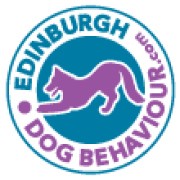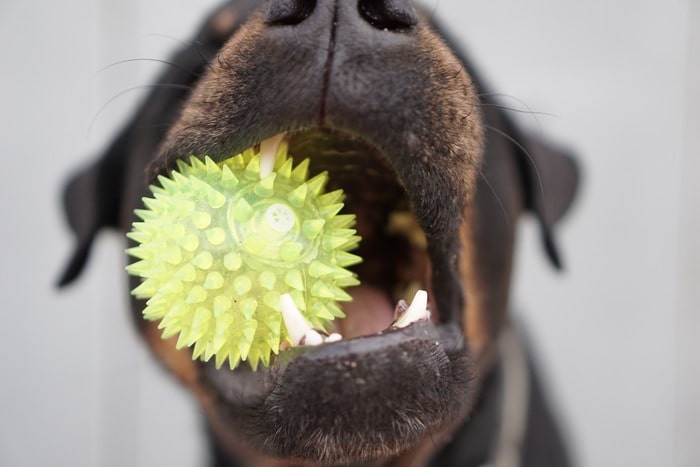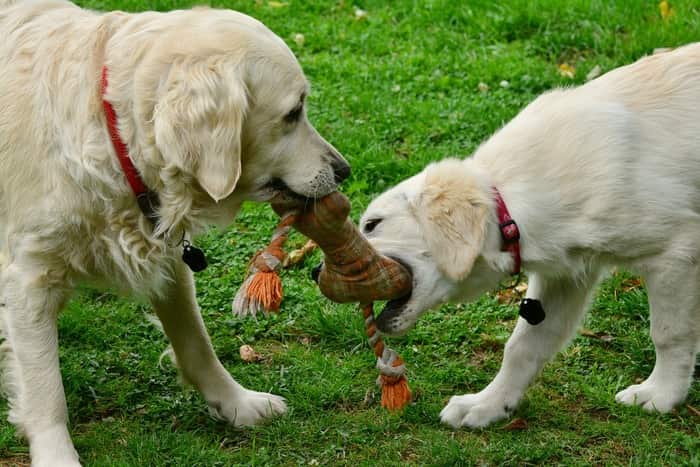Can toys help my dog beat separation anxiety?
admin2021-04-08T07:59:56+00:00One of the things I commonly hear from separation anxiety clients is “we leave him with toys but he doesn’t even touch them”. And yet there are countless dog toys marketed as “helping” to cure separation anxiety! So what’s going on?
As a separation anxiety specialist, I think toys are incredibly important in helping dogs overcome this problem, but not in the way that most people might think. Read on to understand more about how toys and play can help your dog feel better when left home alone.
Play is important for dogs suffering from separation anxiety
Play makes us feel good, and has been shown to have beneficial effects not only on mental health and anxiety, but also in enhancing learning and the bonds between individuals. Dogs possess many of the same physiological pathways as humans, and have been shown to benefit in very similar ways.
Play serves a great many functions, and whilst historically was considered to be something animals only engage in when they are completely fit and happy, more recently we’ve come to realise play also functions to diffuse conflict and increase feelings of wellbeing.
But my dog won’t even eat when I am away!
And THIS is where most owners are coming unstuck! If you bring out the toys and food when you’re about to leave, you might as well be switching on a big neon sign that says “we’re going”. Not only this but many toys and long lasting chews are actually designed ONLY to be used with supervision, so there are good reasons not to provide these kind of enrichment when you’re going to be out of the house.
Because separation anxiety involves the activation of fear and panic systems within the dog, the last things most dogs want to do when left is eat or have fun. When your dog experiences panic at being left, their body goes into “fight or flight” mode and all none-essential systems will shut down – neither eating nor playing will get them out of this “life threatening” (in their mind) situation and so these behaviours are more often than not absent.
That isn’t to say that ALL dogs suffering from separation anxiety will refuse food or toys when left home alone. I have seen many a dog that is visibly distressed but still attempts to eat. Some will use chew toys (and furniture!) as a way of attempting to release endorphins too. Every dog is different and our job as part of their pack is to really get to know and understand how they cope with challenges, s we can give them the best support possible.
How toys and play can help to cure your dog’s separation anxiety
For the reasons mentioned above, I do not recommend in the first instance that toys or food are used as part of absence training. Bringing a toy or food out just before leaving your dog will not only cue them that an absence is going to take place, worse still, these toys, and even play and enrichment in general may become poisoned or even “punished” (you are applying an aversive consequence – leaving – to a behaviour, in this case playing or interacting with the toys).
I do however strongly encourage you to make play and enrichment a big part of your dog’s daily routine. As well as promoting relaxation, happiness and wellbeing and strengthening the bond your dog has with you, cleverly designed enrichment sessions can help your dog build independence and confidence and help them value their time at home as much as their time out and about.
Whist training our dogs we can never lose sight of what sociable, intelligent and adventurous animals they are. It is completely reasonable that being left alone at home would be stressful, but as an owner you can make a huge difference by ensuring your dog’s mental wellbeing is taken care of as much as possible through each day. Helping them meet their needs before you leave will make it much easier for them to settle and relax when you’re gone, as they won’t be left wanting!
Here are my top 3 ways to use toys and games as part of your separation anxiety treatment:
1. Rather than bowl feeding your dog, use their food allowance in enrichment toys or hide it around the house/ garden – this allows your dog to work their body, brain and nose which feels good, tires them out, and decreases their dependence on you as “provider” (“I don’t need you I can find my own food”). My favourite toys for delivering food are those from the KONG range, in particular the lesser known KONG Tiltz for dry kibble and the Foragers Flower which is great for wet and raw diets and holds a surprising amout of food!
2. If your dog tends to follow you around the house, use toys and chews to encourage them to spend time further away from you. Choose a toy or chew that you can tie to a heavy piece of furniture – this will stop your dog simply picking it up and bringing it next to you. If your dog is particularly hyper attached, start “easy” with the tie out toy/ chew within sight of you or even over the side of the same room.
Over time you can start to tie the toy further away/ just out of sight in another room to encourage your dog to spend time relaxing and enjoying themselves away from you. KONG classics and goodie bones are great tie out toys as you can stuff them with all kinds of tasty treats, and even freeze them, however for something extra tasty and alluring I recommend ostrich bones, or if you have a more intense chewer, beef feet! As with all toys do make sure you supervise to ensure your dog is playing safely.
3. Spend 10 minutes twice a day on interactive play – if you can do more, great! But 10 minutes twice per day should be the bear minimum of interactive play between you and your dog. Choose a game you both really enjoy! I often recommend nose games like “find it” as well as games like tug that will help your dog learn self-control, more so than adrenaline-fuelling games like fetch that are likely to release the same sorts of hormones that are implicated in stress responses.
Self-control is a useful skill for separation anxiety dogs to develop as it helps them learn to deal with feelings that may be uncomfortable, such as anxiety and disappointment. I have seen many a separation anxiety dog that has a tantrum when the owners leave (my own young collie Talisk is still prone to this from time to time, but will settle when asked to over our pet cam!), and if this happens often the dog just remembers “being left = stressful”, and we want to avoid this whenever possible.
Worth a mention here are my all time favourite motivational tug toys (also great for supercharging your recall!) – the marvellous range from tug-e-nuff! My classes are full of dogs in love with their tug-e-nuff toys and as a family business they are friendly and helpful in recommending toys that will suit your individual needs.
So there we have it! A brief introduction to using toys to treat separation anxiety in your dog! Hopefully this has given you some inspiration and answered some questions, but if you are still wondering how to help a dog with separation anxiety there are plenty more tips in the articles section of my website. Wishing you lots of success as you work to support your dog.




